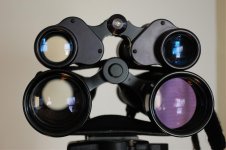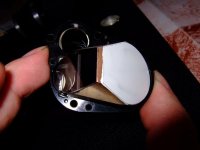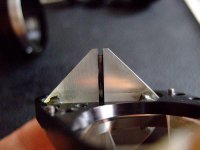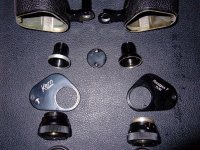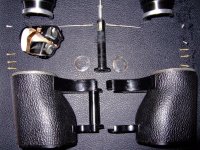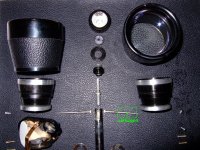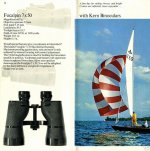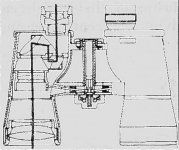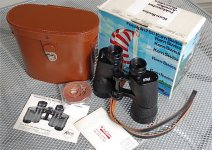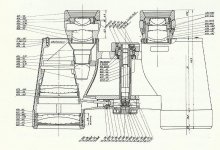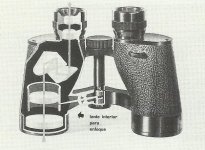I recently acquired a Kern Focalpin 10X60 in excellent condition.There was some haze on the focusing lens and a little on the prisms which cleaned off easily, and all optical surfaces including coatings are now clear and in almost unblemished condition (except a few old rub marks on the outside of one objective lens). Focusing is smooth and build quality is very high and also very interesting. However, optical performance is disappointing because of a grey/green sort of coloring to the view. Initially I though this was because the binocular had too many light reflecting air/glass surfaces (air spaced objectives and a third internal objective lens for internal focusing) and not adequate type AR coatings to properly transmit light. Although I still think this is in part correct, I can't believe that a company like Kern would have marketed a binocular with a view like this. The contemporary Hensoldt Dialyt 10X50 and CZJ Jenoptem 10X50 blow it out of the water! I now suspect the problem may have to do with an unusual covering on one of the sloping sides of each of the ocular prisms. The coating is white and at first looks like paint but upon closer inspection looks like an adhesive material. Here is a picture:
http://www.flickr.com/photos/binocwpg/6448260983/in/photostream
Does anybody know what the purpose of this covering is? It is certainly not a baffle. My wild guess is that for some reason the prism is silvered on the coated side (why would a Porro I prism be silvered??), and the silver has tarnished affecting the view. Any ideas?
Here are some more pictures of the binocular and internals:
http://www.flickr.com/photos/binocwpg/6448282533/in/photostream/
http://www.flickr.com/photos/binocwpg/6448277103/in/photostream/
http://www.flickr.com/photos/binocwpg/6448268527/in/photostream/
http://www.flickr.com/photos/binocwpg/6448260983/in/photostream
Does anybody know what the purpose of this covering is? It is certainly not a baffle. My wild guess is that for some reason the prism is silvered on the coated side (why would a Porro I prism be silvered??), and the silver has tarnished affecting the view. Any ideas?
Here are some more pictures of the binocular and internals:
http://www.flickr.com/photos/binocwpg/6448282533/in/photostream/
http://www.flickr.com/photos/binocwpg/6448277103/in/photostream/
http://www.flickr.com/photos/binocwpg/6448268527/in/photostream/




